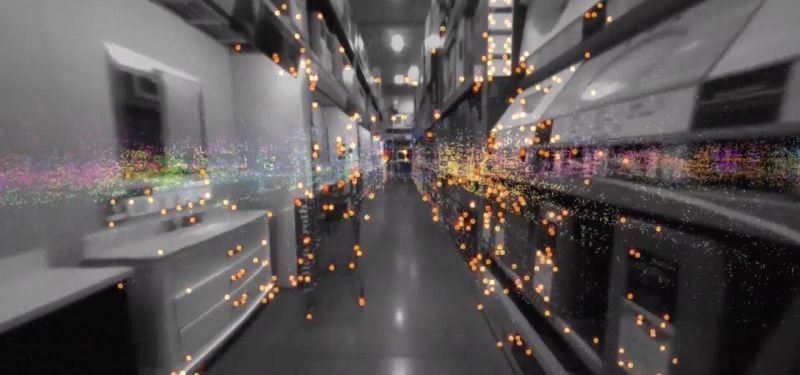How many times have you opened your Google or Apple maps, judged the distance and direction and started to walk, only to realize that the arrow was pointing in the opposite side? It has happened to most of us and it can be incredibly irritating. Walking navigation needed an upgrade and finally it has got one. With a new technology that combines the usage of the phone camera, the map application, and the street view option in the app, finally this dilemma can be sorted out. With this visual positioning system, Google is promising that you won’t be tearing your hair in the middle of a street from now on and courtesy this new visual positioning service, your phone maps or AI will never betray you again. It couldn’t have come at a better time, as more and more people keep relying on their phone maps , GPS apps and computer technology keeps on advancing. Read on.
What was the concern, again?
Everyone regardless of whether they’re walking, driving, or using public transportation utilizes android and Apple maps. The position tracking systems used by the application has gone through various upgrades and although not perfect by any stretch, it is more than handy in giving directions and time needed to get there.
However, there is a glitch, which is probably more annoying than useless- the map AI cannot gauge the direction you are standing in and often times it leads you in the opposite direction. It wouldn’t be such an issue if it immediately showed the wrong direction but usually after the person has walked or driven a few yards (and sometimes more), does the map show that you are going in the wrong way and this infuriates many people. With the new visual positioning service, hopefully this issue will be taken care of.
The conference by Google
The I/O conference of Google was held on the 4th of May which is when Aparna Chennapragada- the senior director of products in the company unveiled the new visual positioning service to rapturous applause.
She mentions how cumbersome it was for the us to move around in the real world to make sure the blue dot representing the user also aligns accordingly- and more often than not it wouldn’t work. The new Google maps will change all that- according to her, the new features will display blown up 3D directions and exact reference to locations by the phone AI.
A mini map will also be displayed in the corner, which will be in the traditional form. The position tracking systems of the app will also highlight nearby points of interest such as stores or restaurants and finally you get a cartoon fox as a guide if everything still fails.
The indoor positioning system
Image Source : img.reality.news
The visual positioning service works on the principles of indoor positioning system. The indoor positioning system can be described as GPS for indoor environment. The IPS can be used to locate everything from people to objects inside buildings. The technology is gaining popularity and is already in use at places such as airports, malls, and other indoor venues.
If you go deep down to basics, it uses radio waves, magnetic fields, and acoustic signals by which any object can be located. Similar to this will be the VPS which will apply the same principles, only in the outdoors. Expect the IPS technology to evolve with time as more and more people adapt to the VPS technology. But what exactly is visual positioning service?
Visual positioning service- What is it?
This new visual positioning service is called the visual positioning system. This feature uses the phone’s camera and its hefty data information to identify the surrounding area. Unlike the GPS, which gets its direction from satellites and thus can be unreliable and unpredictable, the VPS tracks features in the surrounding environment.
Google has some high-end plans with the VPS, which apart from its usage in maps, will also be used in conjunction with augmented reality – another technology Google is pursuing with a passion. However, as of now, the VPS is being mainly used for camera assisted walking navigation for Google Maps.
With the visual positioning system, Google also plans to create a database of locations around the world, which will come very handy for tourists. As mentioned by Chennapragada- “GPS alone doesn’t cut it.” It is about time that a technology of this kind came about.
What would you need to do?
It may be sometime before you could use the visual positioning service on your phone; but when you do, this is what you’d need to do: Upon opening Google maps, you would tap a button to activate the visual view feature.
Then all you need to do is point your camera anywhere and you will be provided with relevant information such as nearby restaurants, banks, and local points. The map will have an overlay with all the information and there would be arrows that will point you in the right direction. It’s incredibly simple- just the way Google likes things. You could use the feature in malls, museums, and theme parks.
Google has promised that they’d provide all the data which would be stored in their databank. This technology is reminiscent of Pokémon Go and there isn’t much difference as you’d see information appear over Google map’s 2D interface.
Final thoughts
Google Maps has revolutionized the way we navigate and the visual positioning service will make things even better. The application of VPS could be as important, if not even more important than GPS. Perhaps the GPS would soon go extinct as maps would be capable of everything the GPS does. Of course there are naysayers- many feel that the obsession with smart phone is at an extreme now and all the new innovations will leave us at the mercy of these technologies but those are after thoughts.
The visual positioning service will be a boon for tourists who can easily get acquainted with a location on visit. If things go as Google expects, then this application will probably revolutionize the way we commute. And the average individual who probably uses Google maps as much as YouTube or any other app will probably be delighted. Currently, there hasn’t been an official release date – but we can wait.







